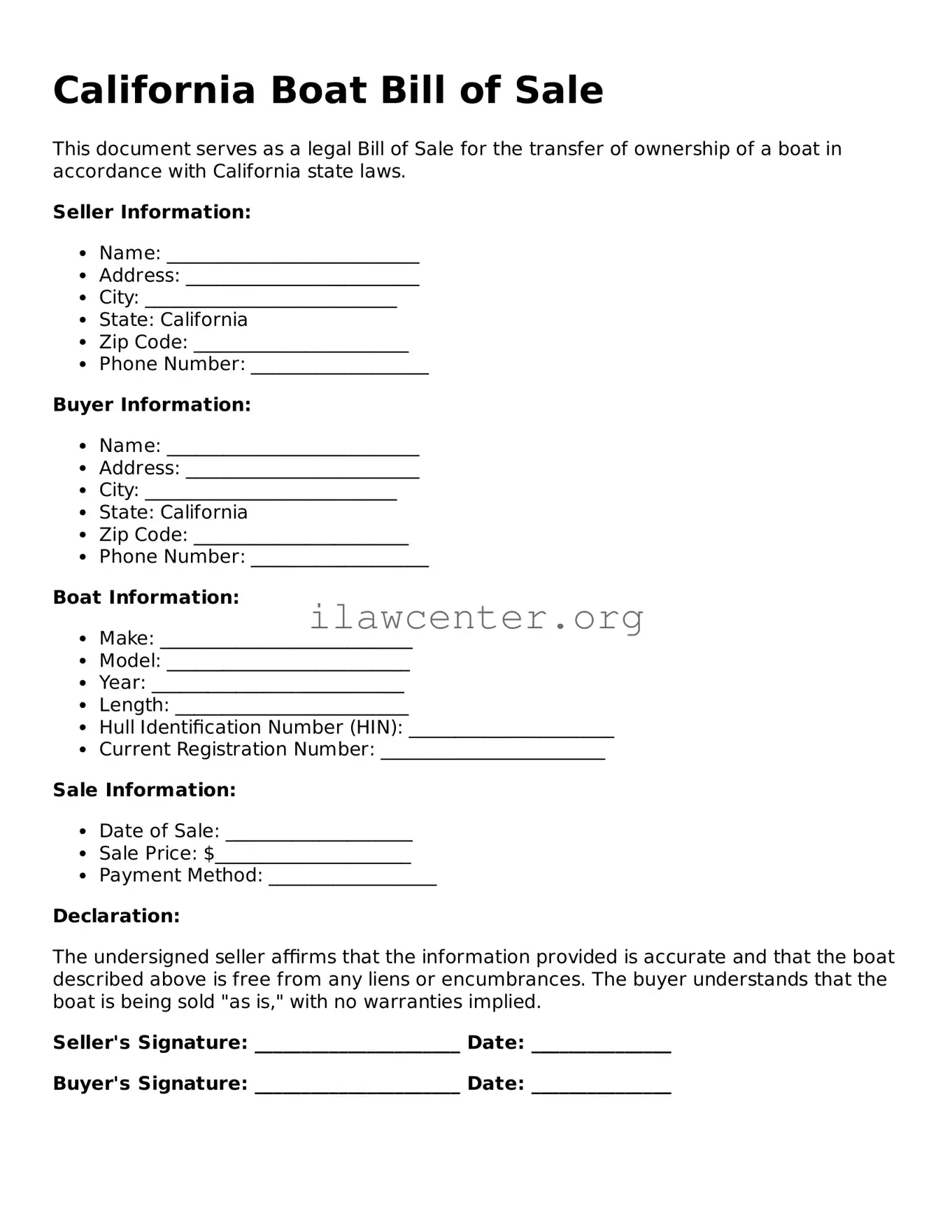What is a California Boat Bill of Sale?
A California Boat Bill of Sale is a document that records the transfer of ownership of a boat. It serves as proof that the seller has sold the boat to the buyer. This form is particularly important for registering the boat with the state and can protect both parties in case of disputes.
Do I need a Boat Bill of Sale when buying or selling a boat in California?
Yes, you need a Boat Bill of Sale when buying or selling a boat in California. While it is not legally required for some types of boats, having this documentation is highly recommended. It helps ensure clear ownership transfer and can simplify the registration process.
What information is included in the Boat Bill of Sale?
The Boat Bill of Sale typically includes details like the names and addresses of the buyer and seller, the boat's make, model, year, hull identification number (HIN), the sale price, and the date of sale. Both parties should sign the document to validate the transaction.
Can I create my own Boat Bill of Sale, or do I need a specific form?
You can create your own Boat Bill of Sale, but it’s best to use a standard form to ensure you include all necessary details. Many websites offer templates that meet California's requirements, or you can find forms at local boating agencies.
Is a notary public required for the Boat Bill of Sale?
A notary public is not required in California for a Boat Bill of Sale, but having the document notarized can add an extra layer of protection. It provides additional proof that both parties agreed to the sale and can help in case of any future disputes.
What should I do after completing the Boat Bill of Sale?
Once you complete the Boat Bill of Sale, both the buyer and seller should keep a copy for their records. The buyer will need this document to register the boat with the California Department of Motor Vehicles (DMV) or the appropriate local agency.
What if the boat is being sold for parts only?
If the boat is being sold for parts, the Boat Bill of Sale should note this clearly. It should indicate that the boat is not operational and is being sold as-is. This helps set clear expectations between the buyer and seller.
What happens if I don’t have a Boat Bill of Sale?
If you don’t have a Boat Bill of Sale, you may face difficulties in proving ownership, which can complicate boat registration. Without it, a buyer may also run into issues later on. It’s always best to have one for a smooth transaction.
